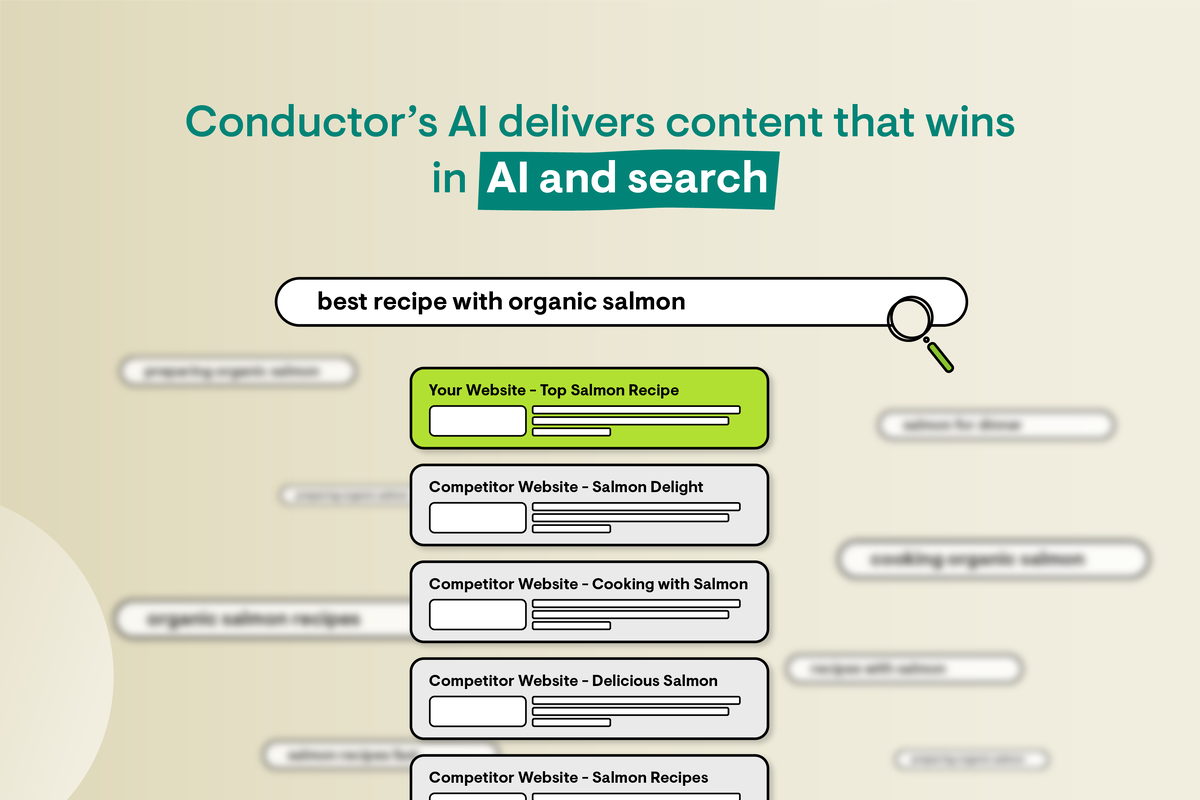The new content playbook for winning in the AI search era
Sponsored by ConductorAs search shifts from links to LLMs, content leaders must rethink visibility and content creation from the ground up

AI is reshaping the search experience as we know it. For over 20 years, Google has governed how users find information online. While search algorithms and experiences have constantly shifted, the foundation has remained somewhat the same: links to websites that Google determines to be the best match for users’ queries, rewarding those sites with organic traffic.
Say goodbye to blue links and hello to generative answers
We are now operating in a world where queries are longer and more personal, often taking the form of full-length conversations. AI provides synthesised answers directly to each query – no clicks required. And users are often satisfied with those direct responses, without needing to visit the original source.
Understandably, brands are racing to grasp how visible they are in this new landscape. Are they being picked up by AI? How are they being represented? Who else is showing up? And more importantly: what can they do to increase their chances of being referenced accurately and meaningfully?
There are countless theories, but the answer is understanding how large language models (LLMs) power these new search experiences.
LLMs function fundamentally differently from traditional keyword-based search engines. LLMs don’t “see” text and content the way humans do; they translate unstructured data into mathematical representations called embeddings, frequently visualised in a 3D vector space. Words, phrases and ideas with similar meanings cluster together, allowing LLMs to match queries to content based on semantic similarity, not simple keyword overlap.
The strategic pivot: adapting content creation for LLMs
Digital marketers need to rethink their content strategy to optimise for LLM-based AI search. Previously, success often meant creating a few optimised landing pages for high-value keywords. If a user found the page, they’d explore more content, and hopefully convert. This approach no longer works when users aren’t clicking on these pages.
To win in the new AI search era, marketers need to deliver content creation at scale that is high quality and comprehensive, and addresses the much more personalised and nuanced search queries from users today. However, this isn’t easy to do, especially if the expectation is now to create far more of it, because quality content creation is often time-consuming, manual and difficult to scale.
This is one of the reasons why AI content generation has become so popular – many content marketers now rely on AI to help them scale content creation workflows. But when used without structure or oversight, these tools can introduce significant risk: low-quality content that impacts brand authority and negatively impacts AI visibility.
How LLMs evaluate content – and what they reward
Many familiar elements of high-quality content still apply – especially those outlined in Google’s E-E-A-T framework (Experience, Expertise, Authoritativeness, and Trustworthiness). But LLM-powered systems introduce new layers.

Here’s what matters most for visibility:
Search intent mapping. As queries to AI become significantly more nuanced and personalised, how well the content directly and comprehensively answers users’ queries is one of the most important factors when considering content quality for LLM visibility. The goal is to satisfy the user’s specific informational need completely.
Topical coverage and authority. Topical authority is built by creating a network of interconnected content that deeply explores a particular subject. Because LLM-based search relies heavily on semantic understanding and contextual relationships, improving topical coverage naturally aligns with how these models operate. A comprehensive exploration of a topic signals expertise and thoroughness to the LLM.
Authenticity and brand voice. Distinctive content stands out. AI models learn from patterns in language, so unique tone, clear perspective and original insight can all help differentiate your brand and signal quality. For humans, authenticity fosters connection and trust; when people say content sounds “AI-generated”, they usually mean it sounds generic, lacks originality and doesn’t reflect a unique or expert viewpoint.
Citations and authorship. LLMs are trained on vast datasets and learn to identify patterns associated with credible information, which often includes references to authoritative sources and clear attribution. Providing clear citations and identifying authorship helps LLMs (and users) verify the information’s origin and assess its reliability, contributing to the perceived trustworthiness of the content. This is especially important in an era where misinformation can be easily generated.
How to implement AI content generation – without the risk
AI can power content creation, but success depends on how you use it. It’s not just about generating more content. It’s about ensuring that content meets the right quality and performance standards.
Best practices to consider:
Prompt expertise. Develop the skill to write prompts for AI that encapsulate the best practices and expertise required for high-quality content generation, specifically tailored for AI discovery and semantic understanding. This means guiding the AI with context, desired tone, target audience and specific informational points.
Continuous evaluation. Generating more content is not enough. There must be an ongoing evaluation loop that ensures the generated content meets the output quality standards for accuracy, relevance, coherence and brand alignment.
A human expert in the loop. When quality standards fall below a certain threshold, or for content requiring deep expertise or nuanced judgment, the AI content generation workflow must include a human verification touchpoint. This ensures accuracy, adds critical insights and maintains the brand’s unique voice and authority.
Search is no longer just about ranking on a page – it’s about showing up in the answers themselves. As discovery becomes more dynamic and AI-driven, the brands that win will be those that adapt early and create content built for this new reality.
By Wei Zheng, Chief Product Officer, Conductor

Business Reporter Team
You may also like
Most Viewed
Winston House, 3rd Floor, Units 306-309, 2-4 Dollis Park, London, N3 1HF
23-29 Hendon Lane, London, N3 1RT
020 8349 4363
© 2025, Lyonsdown Limited. Business Reporter® is a registered trademark of Lyonsdown Ltd. VAT registration number: 830519543





